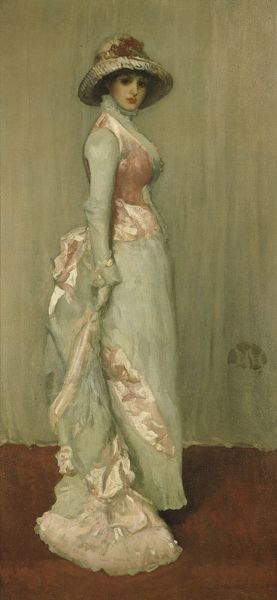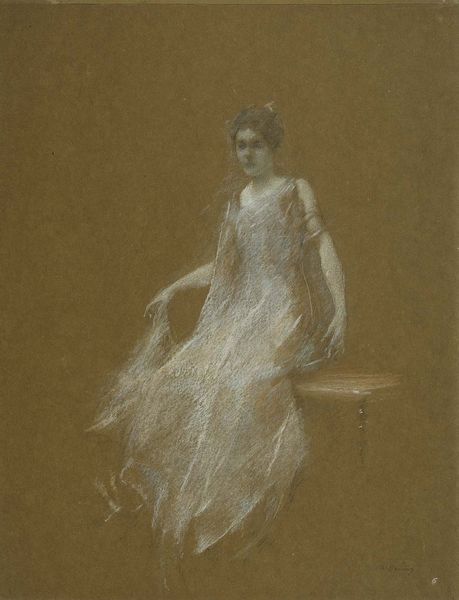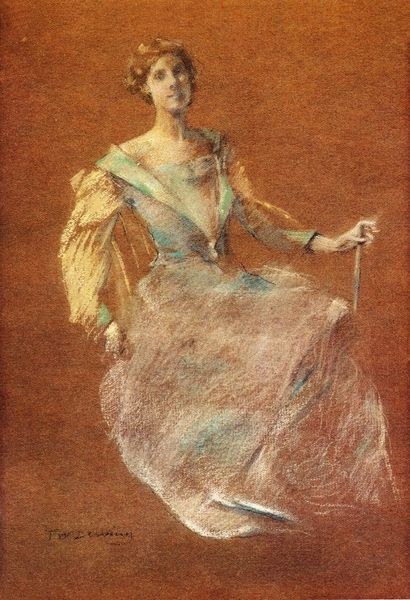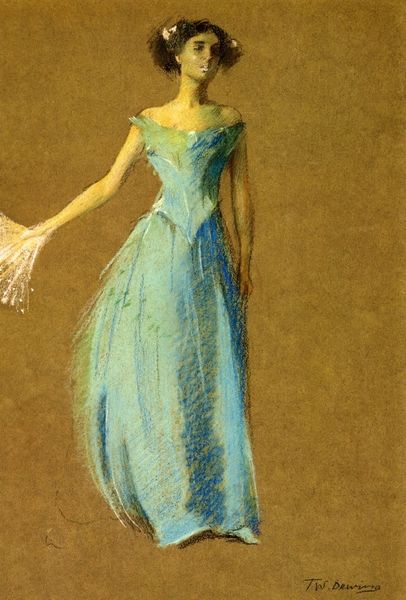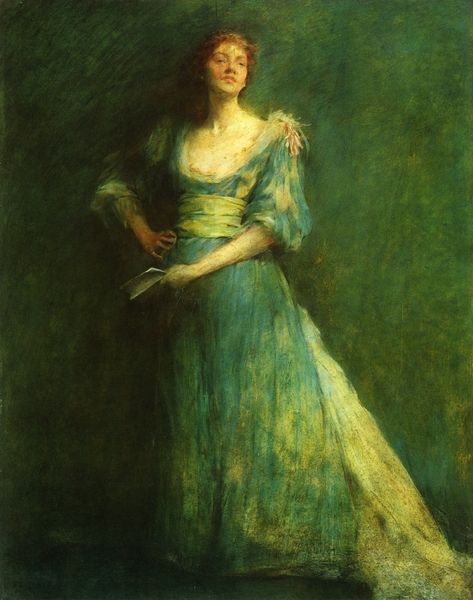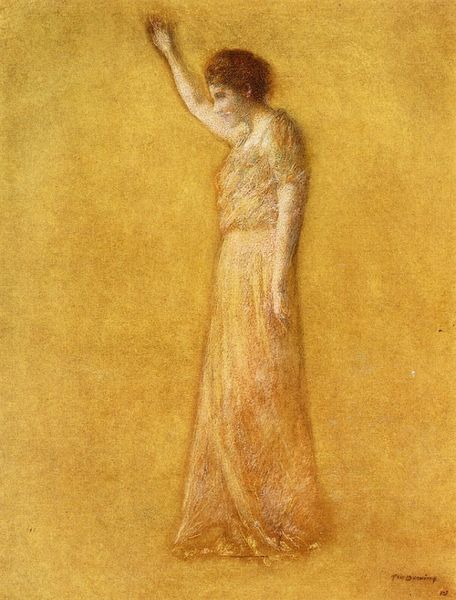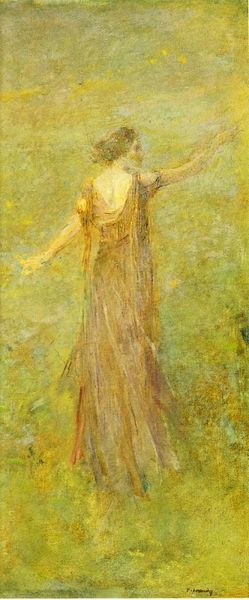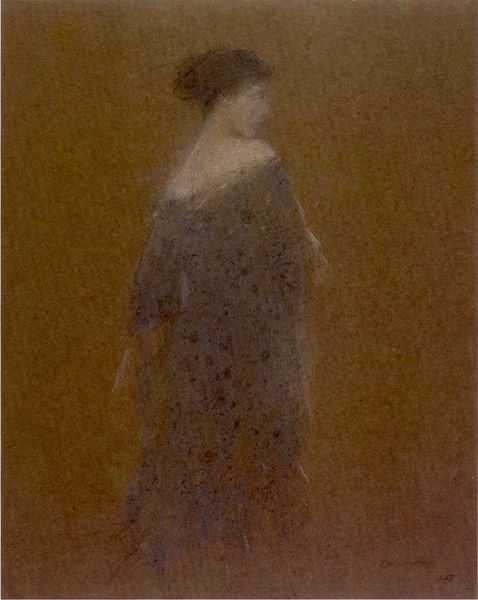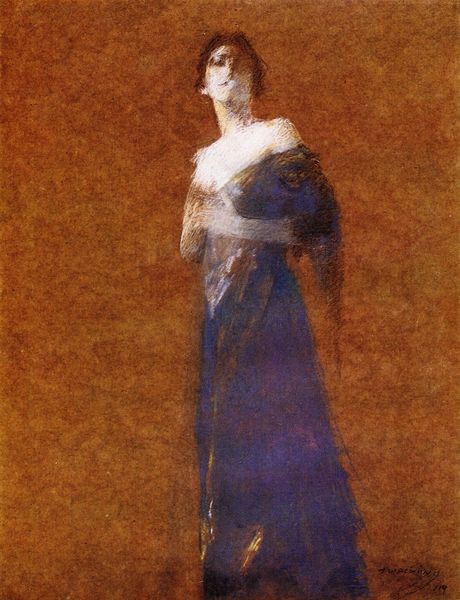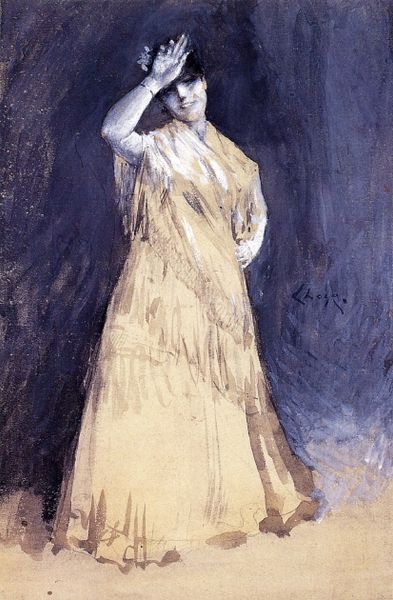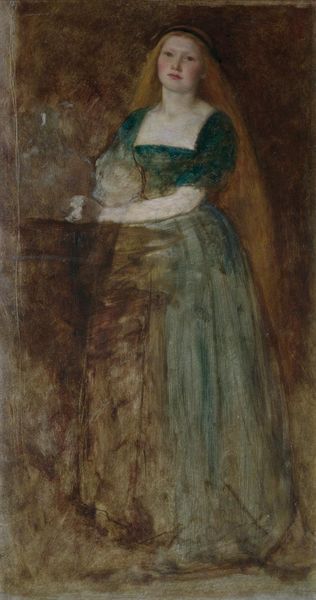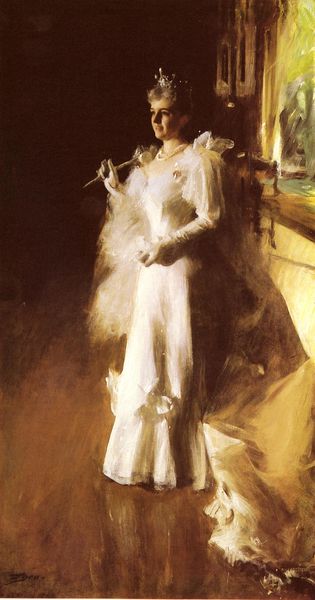
gouache
#
portrait
#
gouache
#
gouache
#
figuration
#
intimism
#
symbolism
#
watercolor
Copyright: Public domain
Curator: Thomas Wilmer Dewing's "Lady in Lavender Dress," dating from around 1910. A gouache piece depicting a woman in formal attire, holding a delicate fan. It’s a particularly strong example of turn-of-the-century aestheticism. Editor: Ethereal! That's the immediate word that springs to mind. The hazy treatment of the figure makes her seem almost spectral. The dress and fan blend together, a blur of motion on a textured canvas. Curator: Dewing moved in circles where such depictions were charged, not simply portraits, but markers of class aspiration and social positioning. Consider the controlled palette; lavender wasn't just a colour, it signalled wealth and status at this time. Editor: I agree, but it also says something about material itself. Gouache gives a matte finish. It’s not about opulent gleam. The light almost seems absorbed into the pigment rather than reflected back at us, softening the lady’s image and appearance. It gives an intimate mood. Curator: Indeed, which plays into the wider Aesthetic movement desire to remove direct political themes from art while quietly signalling values. Intimism is key; this feels like a stolen private moment, an insight into the sitter’s own reflective interiority, all underpinned by the artistic conventions that frame her as an object of refined taste. Editor: Thinking about the fan...It's made me curious! The materiality of these objects – fans, gloves, lace. They aren’t simple props. It speaks of labor; intricate production chains bringing luxury objects to upper-class consumers to make the art possible to circulate and sale. The delicacy is only there through complex manufacturing and marketing chains! Curator: A fair point! So, a quiet composition imbued with its socio-economic complexities then? Editor: Yes, exactly. Even at first glance there's something so telling about this ethereal, subtly presented image of the elite woman of leisure in early 20th century. Curator: And when considered in the context of Dewing's wider oeuvre and the society he served, one really appreciates just how telling this painting can be for its period and lasting social questions it still evokes.
Comments
No comments
Be the first to comment and join the conversation on the ultimate creative platform.
